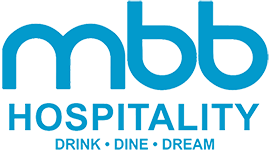
Maintaining an effective inventory revenue margin requires both the right infrastructure in terms of personnel and technology and the right practices. Only a multi-modal approach to your restaurant’s inventory can maximize your profits and promote strategic revenue management.
Here’s a short guide on 5 tips for how to manage your inventory successfully in a restaurant setting.
1. A Proper POS system
A POS, or point of sale system, is essential to running a modern products-based business like a restaurant. They are useful both for single-site locations and for managing the inventory of multiple locations at once. Not only do they establish a professional and efficient relationship with your customers and free up your employees’ time, but they also have specific features tailored for inventory management.
Even if you’re not present at each branch of your restaurant, the right POS system can track pricing inconsistencies and keep track of your inventory between locations. For business owners worried that the absence of their management will negatively affect the business, a POS system is like a mini, automated version of your voice keeping track of revenue streams, inventory, and employee activity. Even orders to your vendors can be made and tracked from your POS system.
For those restauranteurs unlucky enough to have to deal with employee theft, a POS system has a leg up on cash registers since it electronically tracks all the money that enters and leaves the system.
Promotions and discounts are simple when processed through a POS system. You can simply decide on a marketing initiative and distribute it to all your branches electronically, without having to face the possibility of employee error.
2. Update your security
One preventable obstacle to inventory revenue maximization is data theft. Using the best security practices will help you take control of your data storage and keep unwanted hackers out of your system.
You can easily do this by delimiting the number of people who have access to the restaurant’s systems in the first place. Then, you can further limit individual access by only allowing employees to access only the data that is relevant to their position, which will limit the damage if their credentials get out or their account is hacked.
For instance, you can keep the data access between cashiers, chefs, and waiters completely distinct. With separate codes and accounts for each role, you can prevent some of the needless security leakages that can cost a restaurant in the long run.
3. Employee training
Restaurant profitability starts with the people who run it and whether they are all employing the practices that you have established to keep your inventory revenue as high as possible.
If you’re going to implement a POS system in your inventory management (as you should), then you need to make sure your staff is trained in the technology and procedures required to run it. Otherwise, it won’t do you much good.
By training your employees in the intricacies of the system, you can help them prevent waste, track orders, and manage promotions.
The POS system is how your consumers directly interact with your business. A smooth transaction not only maximizes your revenue – it increases your efficiency and professionalism as well.
4. Storage limits
In the restaurant business, items in your inventory have different shelf lives. This means that some need to be limited more than others to prevent perishables from overlapping in shipments that are too large. You don’t want half of your stock to expire because you ordered too much.
Your POS system will help you define the maximum and minimum amounts of storage allowed for each item, which will help you use food inventory management to keep your restaurant’s items tasting fresh and prevent unnecessary waste.
The other benefit of keeping tabs on your storage limit is that you can manage inventories to ensure that nothing goes out of stock.
Managing the physical ingredients in your inventory entails more than electronic management through the POS, of course.
Cleaning the fridges and floors of the kitchen can help with inventory revenue maximization as well by keeping everything organized and preventing things from going to waste. If something goes bad in the fridge, regular cleanings can help you catch it before it contaminates anything else.
Keeping tabs on the fridge temperatures, cleanliness, and physical organization of your kitchen is one of the physical steps you can take towards successful inventory management.
5. Consistency
Consistency takes many forms when you’re running a restaurant. Your restaurant’s profitability may depend on all of them.
The first kind of consistency you need to keep tabs on to maximize your profitability is the taste of your food. Your restaurant is probably known for a specific flavor profile that you can’t sacrifice when you get a new chef, or when your old one becomes complacent.
Your POS system’s configurations can help you maintain your food’s flavor by keeping track of the recipes and inventory so that everything can be prepared as your customers expect it to be.
Consistency also applies to your relationship with your vendors, another aspect that can be tracked and maximized using your POS system. Setting your rates based on competitive market prices and sending and approving inventory requests for multiple locations from one iPad is a power granted to you by a good POS system.
These features allow you to maximize your revenue by managing your outgoing requests from your vendors and even your payments all from one device.
The Takeaway
Maximizing your restaurant’s profitability requires a mix of the control you have over its operations and the automation you can set in motion to manage certain aspects of the business for you.
No modern model of inventory revenue maximization would work without a POS system, whose features are key to helping you manage inventory and requests, restrict and grant employee access, and manage payments, even at multiple locations.
With the right training procedures and security practices, a good POS system can equip you to maximize revenue streams all while increasing your management potential.


Leave a Reply